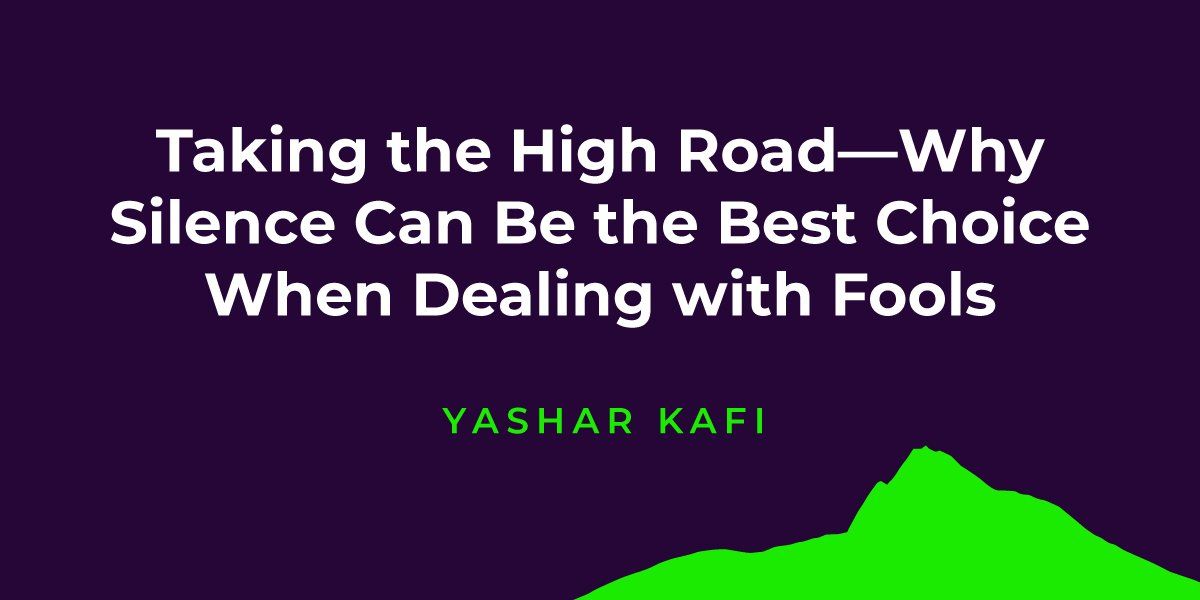Taking the High Road—Why Silence Can Be the Best Choice When Dealing with Fools
Everyone loves a good meme, right? I came across one the other day, and it hit home with me, especially with all that is going on with the world right now and the divisiveness we are seeing on many levels. The meme involves a man addressing Jaggi Vasudev, an Indian yogi and well-known author known publicly as Sadhguru.
The man asks Sadhguru, “What is the secret to eternal happiness?” Sadhguru answers, “Do not argue with fools.” The man quickly refutes this, saying, “I disagree!” Sadhguru simply nods, then smiles, then softly says, “Yes, you are right.”
I chuckled when I got the ending: the man’s hot-headed defiance and upset determination to fight it out and prove he is right at all costs. It directly contrasts the wise Sadhguru’s calm and unbothered response (with a smile) that diffused the futile “fight” that he had no intention of fueling.
So, what does it all mean? That may best be understood by another proverb (exact author unknown), which I have heard that states: “Never argue with a fool. Onlookers may not be able to tell the difference.”
Basically, this means that the less is more mentality can even apply to words, especially when it means speaking (or refraining from speaking) with an obvious fool. These days, with the pandemic still swirling around us and everything being politicized—and above all, tensions running sky-high—it’s proving a “perfect” stage for the real fools to jump up and shout every opinion, resentment, and argument loudly from the rooftops.
But friends, the truth of the matter is, we simply do not have to engage. Even when we disagree with what they are saying, sadly, many are just looking for a fight and would not listen to reason if the truth smacked them upside the head.
Fools or not, the reality is that foolish, hot-headed folks are rarely, if ever, swayed via argument, and in these cases, it shows real maturity to simply walk away—or at least remain silent—when faced with them.
But this is easier said than done, am I right? However, Lao Tzu said it best when he claimed that, “Silence is a source of great strength.” Why? Because it takes a lot of self-discipline and restraint to remain silent at times, especially when you are being provoked or are embroiled in a disagreement in conversation with someone.
So, what to do? When this happens (and it will), a surefire strategy I have had to rely on that has helped is that instead of focusing on “winning” these would-be arguments by trying to convince the other party of my rightness, silence really is golden.
Don’t get me wrong, if you see injustice on a large scale or someone is in danger, speak up. But I am talking about the everyday discussions that crop up. You know the ones. While some arguments are necessary and justified, most are not worth wasting our energy on a lost cause (i.e., making a case for a truth that will only fall on deaf ears).
So what’s my advice? Save that priceless energy (who doesn’t feel like they need more of it lately?) and use it where the soil is fertile and where you can grow something good. In all else, stay silent and simply smile. A fight filled with empty words just isn’t worth forfeiting your peace and happiness.




